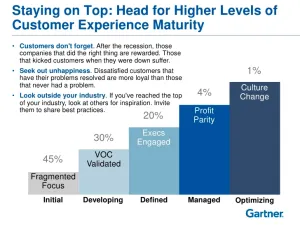Customer Experience Transformation – Key to becoming a Digital Master
Blog: Capgemini CTO Blog
There is no doubt that organizations understand the importance of digital transformation. Worldwide spending on digital transformation technologies – hardware, software, and services – is expected to cross the $2 trillion mark by 2021. Digital transformation is changing how information is shared, used and consumed. The rules of engagement are changing and companies need to continuously evaluate how to engage, transform, compete, and grow. The dynamics of the market are now to disrupt or get disrupted. Digital innovation is driving change.
However, many organizations are finding their digital transformation journeys a struggle. Adoption is at the center of the pillars of digital transformation which include a secure digital experience, digital operations and digital innovation focused on building out a digital ecosystem. Before any transformation project begins, organizations need to consider these four dimensions to become digital masters-
1. Customer journey mapping: There is an increasing need for organizations to invest in the user experience and adapt their structure to the demands of a digital organization. Understand the current user experience and if the interfaces they use are intuitive and user-friendly before any action is taken. A transformation program starts by learning the user’s journey through the process which is undergoing the change. What differentiates an iPhone to a plethora of Android phones is the intuitive user experience and easy-to-use iOS Platform. Without mapping the user journey, a critical ingredient of the digital transformation recipe is missing.
2. Focus on culture: While changing platforms to improve user experience is important, it’s more of an enabler than a driver. The change required in the culture of an organization is the same or more than what is required in the technology platforms. Putting the customer first and focusing on delivering above and beyond their expectations requires a significant cultural shift which is the most intimidating part for many companies. Capgemini’s recent research “Understanding digital mastery today” has shown how important culture is to the success of digital transformation. Teams can be empowered by tools and insights to help drive delivery of targets. Training sessions are useful but more important is the role of a leadership team. They have to ensure that all digital initiatives are aligned with corporate objectives and create a strong governance model that supports the vision and to ensure employees are engaged in the digital journey.
 Source: Capgemini Digital Transformation Institute Survey, Digital Culture; March-April 2017, N = 1700, 340 organizations
Source: Capgemini Digital Transformation Institute Survey, Digital Culture; March-April 2017, N = 1700, 340 organizations
3. Innovation for transformation: Fueling innovation is critical to building a competitive advantage and offers a leg up when it comes to a choice for customers. Innovators are like dreamers; they dream of a solution and they surge ahead with the dream or vision in mind. Often this is the first area to be considered when there is a possible impact or financial pressure on an enterprise.
4. Enabling digital operations: Enterprises need to digitize their operations. It contributes to the overall customer engagement, customer support, and customer retention. Focusing on maximizing the customer’s lifetime value, KPI-driven engagement, and support is key to digital operations. Streamlining operations and focusing on customer experience can drive innovation–true business innovation. This is what connects the two ecosystems: customers and enterprises.
According to a recent report by Forrester Research of more than 1,700 enterprises undergoing a digital transformation, the highest focus has been on the IT processes across various functions and a staggering 50-70% on the overall processes. It’s extremely important to determine the maturity of an organization in terms of addressing customer experience. Then develop an iterative plan to continuously drive change, track it against the key business priorities and map it to the business drivers that improve the customer experience.

Gartner recommends a multi-level model referred to as the Customer Experience Maturity (CXM) Model. To arrive at an engagement delivery plan, it’s important to understand the existing level of fragmentation in the user experience, culture, systems, and operations. Baselining certain key metrics which impact user experience is potentially a good place to start to measure the effectiveness of changing any piece or process.
It’s important to validate how much the voice of the customer is impacting the transformation along with a top-down sponsorship from the executive team. Aligning with the overall profitability and culture of the organization are the final steps to achieving higher maturity and driving the metrics in the right direction.
So how do we go about it?
- Rationalize existing applications and business processes to eliminate disjointed customer experiences and determine how to improve, change and measure the metrics.
- Adopt requisite processes, frameworks, and tools to ensure customer experience is the main driver in the ecosystem change.
- Fine tune the approach by understanding what practices, tools, and framework can drive incremental improvements of the overall customer experience.
- Focus on innovation to differentiate the experience from the competition and drive increased adoption which will generate profitable revenue.
- Iterate to do it all over again and keep it a continuously evolving process as customer experience standards and constantly change. Digital transformation needs to be dynamic to keep the adoption metrics pointed in the right direction.
Continuously evolving, customer experience is the new strategic and competitive business battleground. It will determine the success and failure by driving growth and is the true measure of a company’s digital transformation.
